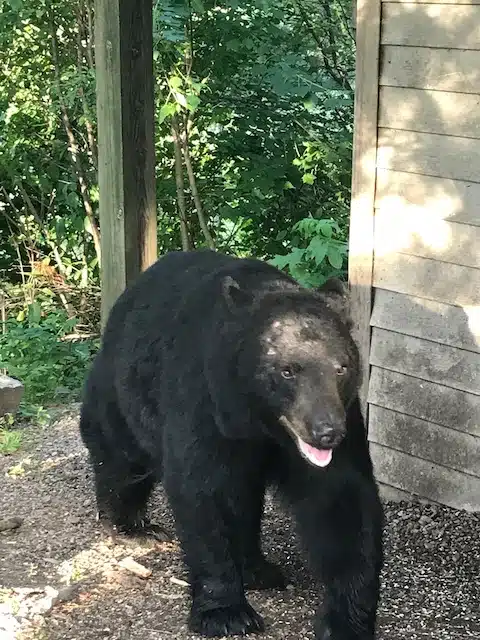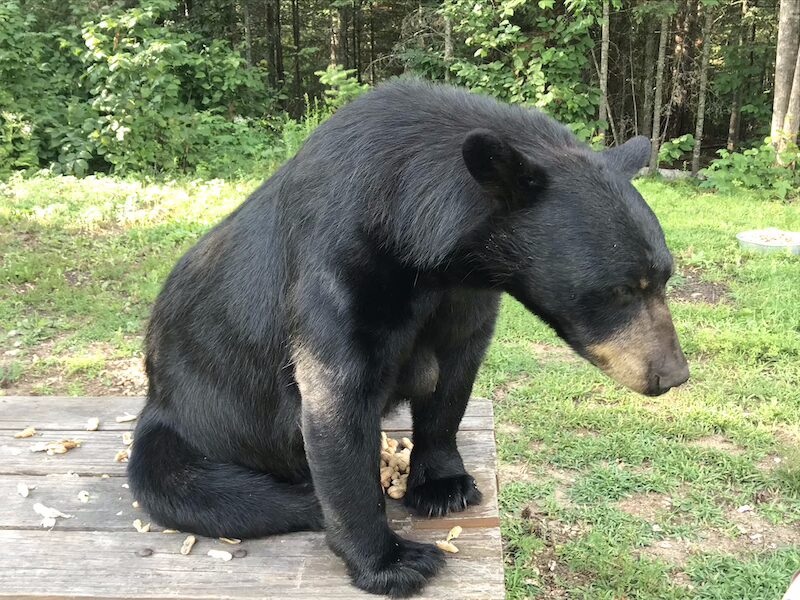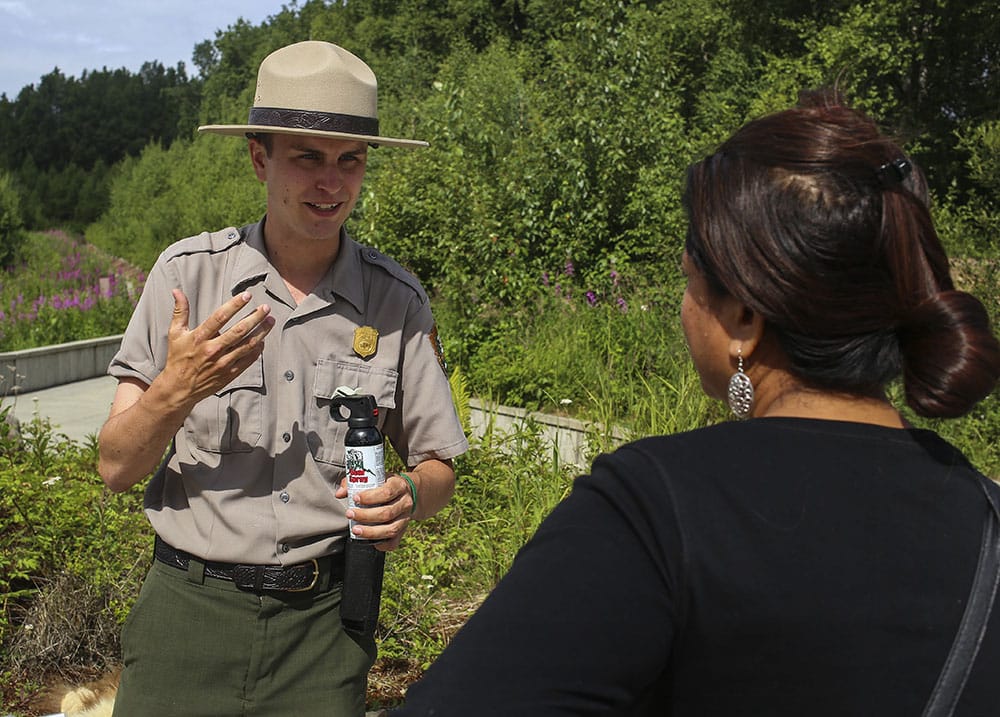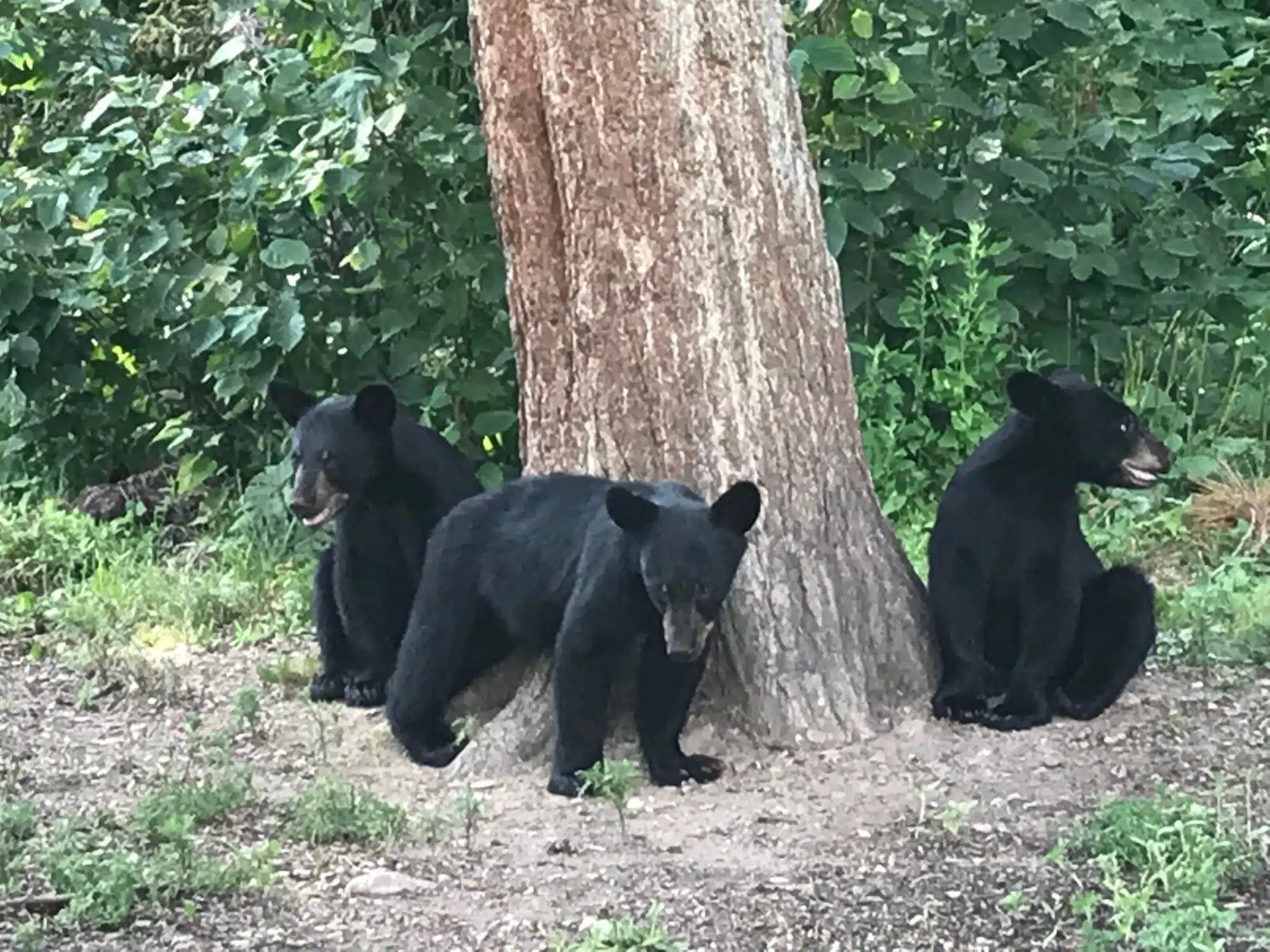Unless you live a life I dream of – off-grid with no need to get online, like, ever – you’ve heard the viral audio. “Can I pet that dog?” the child pleads. “Can I pet that dooooog?!” The hint of drawl/twang and urgency in the voice captured the hearts of millions and became an internet sensation.
Of course, the remix that hit home with campers and backpackers features a black bear.
Wild animals should be left alone. Tampering with their ecosystem can have dramatic effects, even if you walk away unscathed. But, given the slew of tourists snapping selfies or attempting to feed wildlife along roadways, it might need to be said clearly.
“No. You can’t pet that dog.”
Human Bear Conflicts
Most conflicts between humans and bears are “defensive” in nature. That simply means that the bear wasn’t actively looking to engage with the human, but it felt like it needed to defend itself.
This often looks like a quiet hiker rounding a corner to come face-to-face with a mama and her cubs. Or an off-leash dog initiating a scuffle and then scrambling back to its owner, bringing the bear with it.
Much less often, you’ll encounter a “predatory” bear. These conflicts are much more serious because the bear intentionally tries to make a meal out of you. Statistically, you’re not likely to ever witness this behavior in your backcountry adventures. But it does happen.
Between those, you have “food-conditioned” bear behavior. These bears aren’t trying to make a meal out of you… but they’ve encountered enough irresponsible hikers/campers to associate your presence with free snacks. They may raid your camp and trash your tent, looking for scraps. In worst-case scenarios, they can turn predatory.
You can read this article about bear attack statistics to get a bigger picture. But one especially poignant takeaway in light of the “Pet that Dog” video is that leaving kids unattended is the most common “risk-enhancing human behavior” before an attack from a wild predator.
Young children may not understand the dangers of grabbing the snake, picking up a random “kitten,” or cuddling the stray cub. They’re going to want to pet that dog!
Knowledge of animal behavior is crucial to preventing encounters. Let’s discuss some bear-specific facts and what you should do with this information.

Where do black bears live?
Black bears have a territory that stretches across dozens of states and provinces of North America. Their ideal habitat is forested and mountainous. For a helpful visual, check out the interactive map on our Required Areas page. Just remember that the range of black bears’ territory is constantly shifting.
Urban sprawl and logging activity can drive bears out of normal homes in search of new ones. The more humans encroach on their territory, the more they have to adapt.
A couple of years ago, my hometown in central Oklahoma had a full-grown visitor, and we were not even supposed to have bears! Territory maps should be taken as examples rather than the gospel truth.
When are bears most active?
Bears are not nocturnal animals. You may be able to rest easy about coyotes during the day, but not bears! You’ll find them scrounging around for meals and snacks right along with you, so stay bear-aware throughout the day. That said, dusk and dawn are considered “high activity” times for predators.
We recently learned about a cougar roaming our neighborhood and immediately instituted new boundaries. Keeping kids close to the house became our top priority, and I always wear protection when going to the pasture.
No sense in risking it!
Preventing Food-Driven Conflicts
In human/bear conflicts that aren’t predatory or defensive, the presence or perception of human food is often the driving force.
When people leave food unprotected, wildlife often seizes the opportunity. Can we blame them? Easy food is our own species’ downfall, too, after all! But at least we create our own problems. For bears, we are the issue.
If we want to keep bears wild and not train them to visit our campsites and target our backpacks, we’ll have to make sure they never gain a reward for those behaviors. That means locking up our food in bear-proof containers whenever we’re not ready to defend it from them.
Use bear boxes when your campsite has one. Use a BearVault when it doesn’t. And, if you live within the territory range of black or brown bears, make sure you’re also smart about garbage storage.

What to Do if Approached by a Bear
If you’re miles from the trailhead and see a bear approaching, you know not to pet it. At least I hope so… Please, for the love of all things good, prioritize safety over selfies!
But what should you do? Let’s break it down into steps.
Step 1 – Alert the Bear
Remember how I said that defensive conflicts usually start with a surprise? Well, the first thing you want to do is prevent that. If you see a bear in the distance and don’t plan on jumping ship, you need to be seen sooner rather than later. Raising your hands and voice will get the bear’s attention so it doesn’t feel like you snuck up on it. Keep your pitch low to exude confidence.
Step 2 – Give it Space
Unless it’s approaching you, move slowly away from the bear so it knows you’re not a threat. IF, however, the bear is moving toward you, stand your ground. You don’t want to trigger predatory behavior by inviting a chase response.
Step 3 – Monitor Reactions
At this point, the bear’s response will determine your next move. A relaxed bear that’s ignoring you or nonchalantly following the trail can be allowed to pass peacefully. But a bear that’s focused its attention on you and shows signs of agitation is another story. If you see teeth-popping, swatting the ground, or general huffing-and-puffing bravado, prepare for a close encounter.
Step 4 – Manage Charges
Bears sometimes use bluff charges to intimidate perceived threats. You can read more about how to tell if he’s bluffing or not in this post, but your reaction remains the same. When a bear, whether black or brown, charges, stand your ground with bear spray ready to deploy. Keep talking in a calm, low tone. If it gets within range, use the spray to stop the charge.
Step 5 – Defend Yourself
If all else fails and a bear manages to make bodily contact with you, how you respond will depend on what type of bear you’re dealing with. No, I’m not talking about whether it’s black or brown. The important thing is whether it’s behaving defensively or like a predator.
A defensive bear needs to be appeased. Get on your stomach, lock your hands behind your head, and spread your legs out to stabilize this position. Your goal is to demonstrate that you’re not the threat they think you are.
But if a predatory bear is after you, the only proper response is to fight back with everything you have. Nothing is off limits when you’re outweighed by several hundred pounds. Your goal is to make that bear think you’re not worth the effort.
Step 6 – Alert Authorities
If you’ve had an encounter with a bear that includes anything from steps 4 or 5, you should let a park ranger know. Keeping close tabs on a region’s bear population and behavior is an important part of preventing issues. If anything needs to be done with a problem bear, the proper authorities will take steps to make sure future adventurers don’t face the same problems you did.
If you’re taking your kids into bear territory, discuss these steps with them before you go. They need to know how to react as much as you do and will really need to know that you have the situation under control! Emphasize the importance of staying calm, positioning themselves behind you, and sticking close.
You are their safe place. Make sure they understand that!

Recreating in the Wild with Kids
I have strong opinions about children and the outdoors. It’s one of those things that gets people keyed up. I’ve seen people go to war on their keyboards about safety, freedom, and everything in between.
But in my mind, it’s more than just a matter of getting kids off screens and into the fresh air. It’s about recognizing the reality that Nature is who we are as humans and maintaining that connection for my kids.
So yeah, I’m a big fan of kicking my bundled-up kids outside in freezing temperatures to find some fun on the frozen pond. That same pond is great in a whole new way when we’re drowning in the heat of an Oklahoma summer and it’s all muddy from a recent rain.
We camp, hike, fish, and farm. If it’s an outdoor activity, we’re probably game.
But we don’t pet the “dogs” when they’re wild, no matter their form. And neither should you.
Author Profile

Jessica Cockroft
Jess merges her passion for words and an insatiable longing for adventure as an outdoor freelance content writer and marketer. When she’s not busy stringing words together you’ll probably find her planning another camping trip for her crew of kids or taking care of the homestead. You can find her on LinkedIn and Instagram, as well as on her own website.



